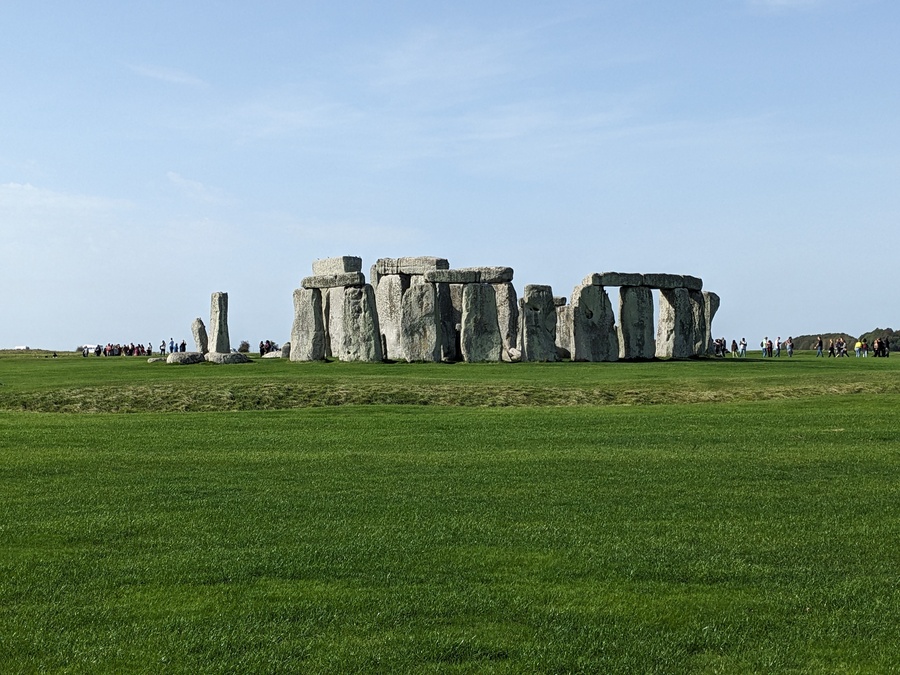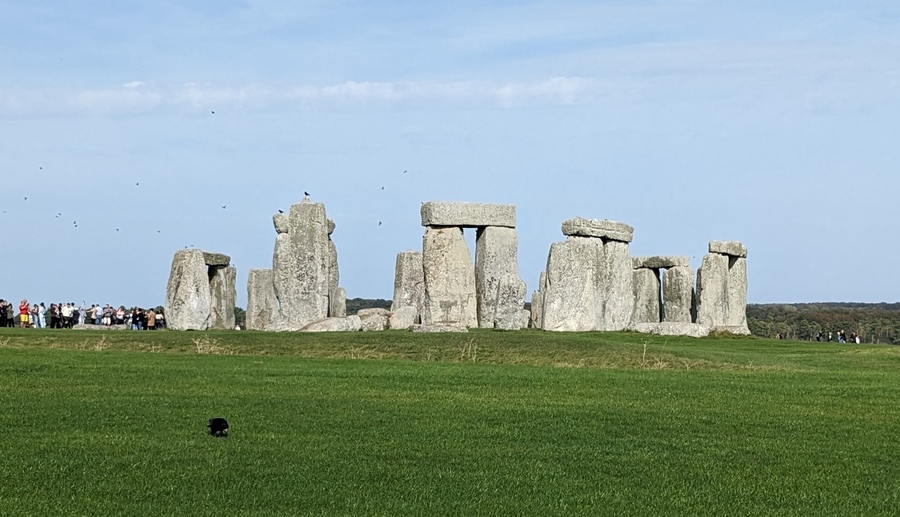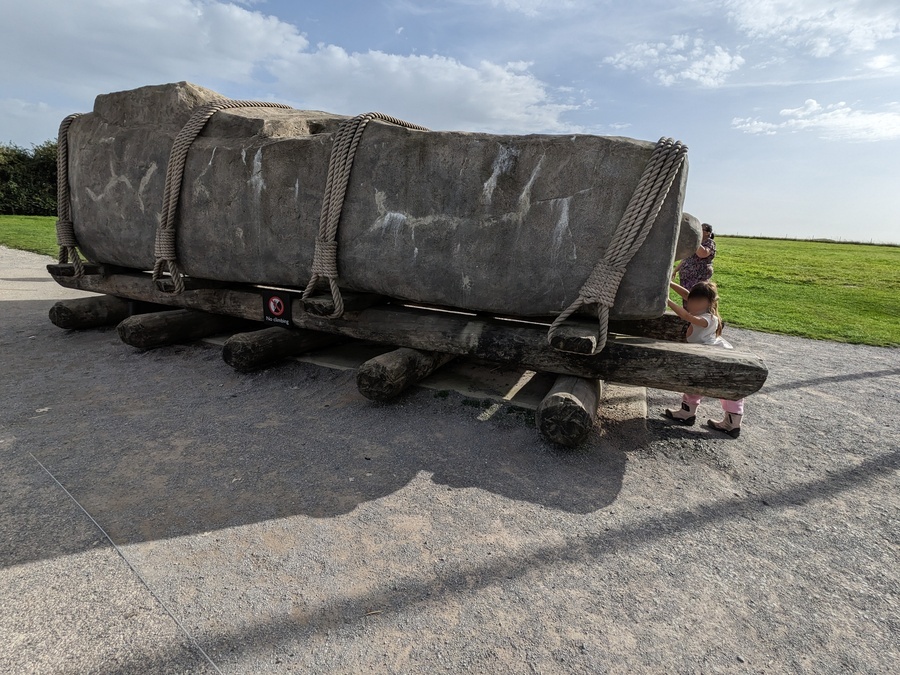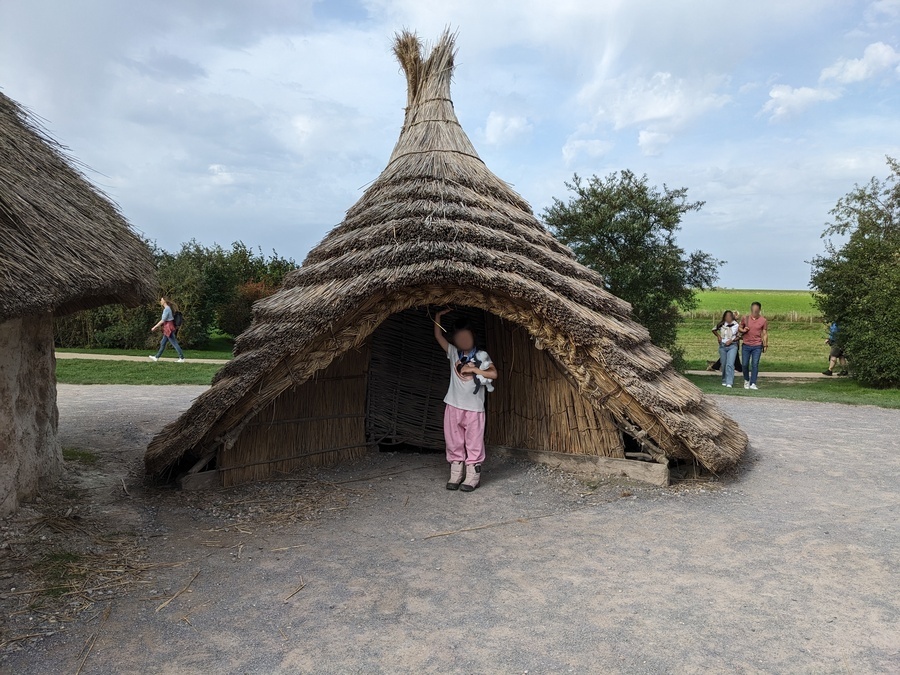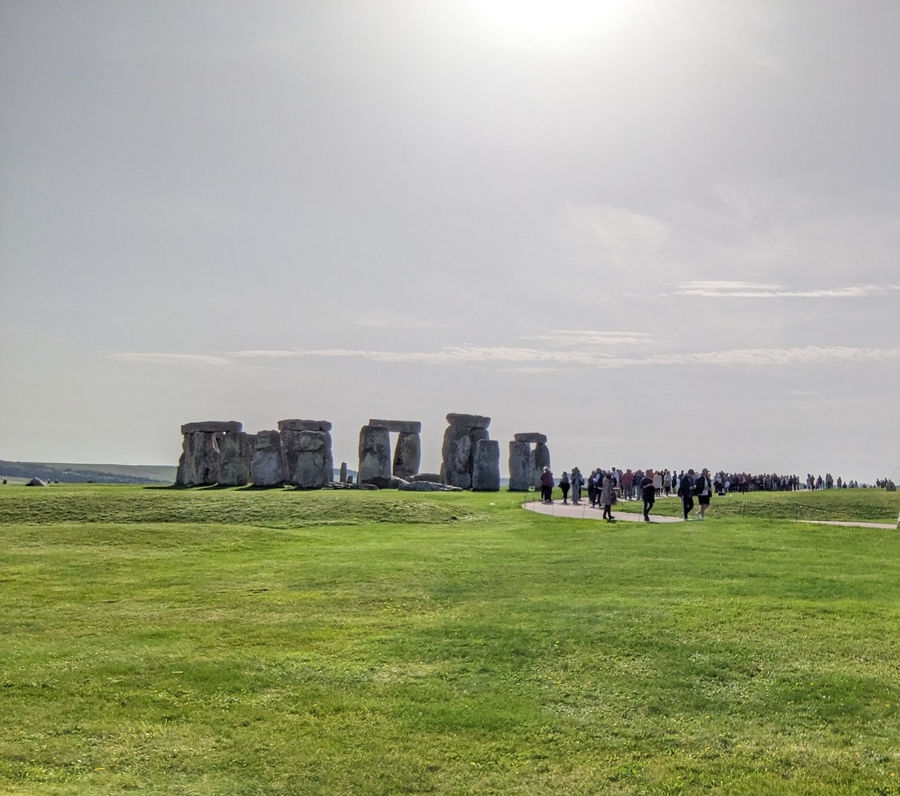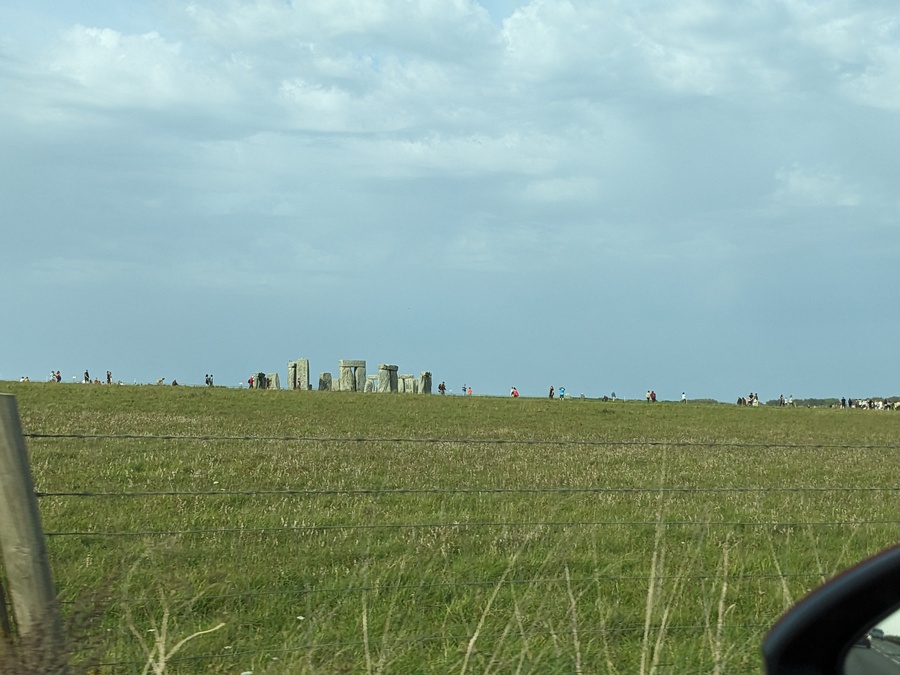The truth about why and how Stonehenge was constructed has been lost to the sands of time. Some believe it was purely a place of worship, some believe it was also a place of healing, and some believe it may have some relationship with extraterrestrials – either way, transversing about 5000 years of history, the place does seem to have it’s own special aura.
From the visitor centre, which offers an exhibition and refreshments, it’s a pleasant 1½ miles walk through fields to the stone circle.
The outer ring of is built of sarsen standing stones, each weighing about 25 tons. Horizontal lintel stones held in place with mortise and tenon joints connect each pillar.
Sarsen stones are silicified sandstone. The name “sarsen” may possibly come from hybrid Anglo-Saxon “sar-stan”, meaning “troublesome stone”. Troublesome stones or otherwise, constructing the stone rings was certainly no mean feat.
Recreated neolithic dwellings adjacent to the visitor centre provide more feeling how people lived during the period when the stones were erected, about 2,500 BC.
Calm to contemplate the universe over a picnic.
It’s also possible to catch a brief glimpse of Stonehenge as you drive along the A303.
